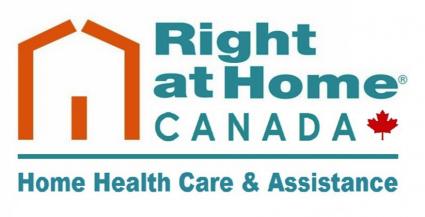Calories. Trans fat. Serving size. Understanding food nutrition labels can be challenging, and many consumers just figure why bother? But for older adults, simply ignoring nutritional information can considerably compromise their health. Elders are encouraged to make better food choices and create a healthy eating style because every single bite counts toward a balanced diet. Even small changes in more nutritious meal and snack options add up to long-term health benefits including stronger bones, greater muscle flexibility and increased longevity.
“As we age, we require fewer calories but more of certain nutrients including potassium, calcium and vitamins D and B12,” said Nancy Esson, Client Relations and Owner, Georgian Triangle “Many elders encounter difficulties when shopping for and cooking nutrient-rich foods, but dietary obstacles are usually quite manageable with a little coaching and assistance. Staying active and independent as an older adult often will start at the grocery store.”
The following tips for helping the elderly shop for well-balanced foods, Esson recommendations are below.
Understand the basics of nutrition.
Talk with geriatric health professionals and visit nutrition websites or seminars about essential food groups (fruits, vegetables, grains, proteins and dairy) and healthy eating suggestions for older adults. Encourage elders to pay close attention to the key elements of food labels: calories, sodium, sugars and fats. Help ensure that elderly individuals fill half of a mealtime plate with fruits and vegetables. At least half of grains served at an elder’s meal should be whole grains, and meats should be naturally lean or low in solid fats. Older individuals with diabetes, high blood pressure and other chronic health conditions are advised to consult with their family physician or a dietician on specific foods to include or avoid for healthy eating.
Plan first, buy second.
Smart food choices involve planning which ingredients are needed for recipes and knowing their nutritional value, price and availability. Elders are suggested to make a detailed list of foods and beverages to buy for several days at a time. For older adults who typically cook for one or two may consider foods or meals that can be made in larger quantities and safely stored for additional meals. Snacks and desserts are tempting to purchase, especially when they are on sale, but these items should be only special occation buys.
Think accessibility.
For getting around the grocery store smoothly, elders may want to rely on an electric shopping cart or ask an employee for assistance with getting items off shelves. If fatigue sets in while shopping, the older adults can rest on a bench within the store. Some grocery carts have built-in seats. It is a good idea to remind elders to shop when they are well-rested and the store is not crowded with other customers like in the morning when people are working. To help eliminate impulse purchases, encourage the elderly to hold off food shopping when they are tired, hungry or feel rushed. Also sticking to their list and only their list will help.
Consider using grocery store apps.
To make food shopping easier, a number of cell phone and mobile device supermarket apps are available to create shopping lists, find bargains and scan barcodes. Several apps integrate menu planning, recipes and meal suggestions for your balanced diet. Do a little research to make sure the app is user-friendly to match the elder’s technical proficiency.
Arrange for assistance.
If grocery shopping with an ageing loved one is not possible, perhaps a friend, neighbor or volunteer from an elder center or place of worship can help. Certain stores offer online ordering and home delivery services. Some stores offer free delivery of groceries for elders, and others charge a nominal fee. Many older adults benefit from professional at-home elder care services like Right at Home, which can provide a helping hand with meal planning, grocery shopping and cooking — helping elders protect their health through regular, proper nutrition gives them a better quality of life.
“Addressing ways to eat well as people age also considers possible dental problems that make chewing a painful chore or diseases such as Parkinson’s or dementia that affect swallowing,” Esson added. “One’s sense of taste and thirst can also lessen with age and lead to a disinterest in food or cause dehydration. These special health needs highlight the importance of encouraging elders to stay engaged with their daily food choices.”
For additional information about nutrition basics and healthy eating for older persons, visit the World Health Organization’s website at www.who.int/nutrition/topics/en/.



